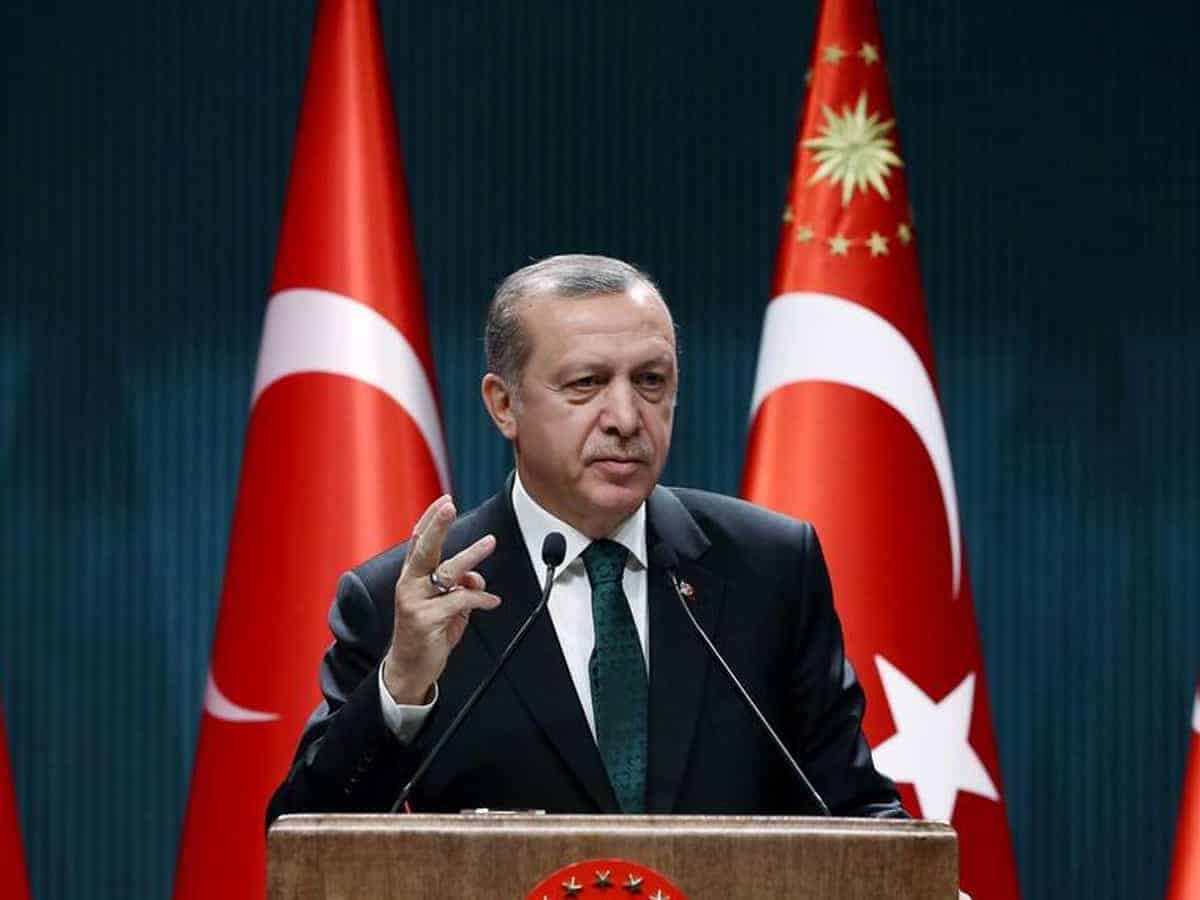Nicosia: Ignoring strong reservations and objections from many quarters, Turkey’s autocratic President Recep Tayyip Erdogan on Saturday took the first step for the implementation of his most ambitious mega project called the Canal Istanbul project, with the groundbreaking ceremony at Sazlidere dam. The project, which Erdogan described as “crazy” when he first suggested back in 2011, involves the digging of an artificial 45-kilometer canal, parallel to the Bosporus, linking the Black Sea with the Sea of Marmara. The planned canal is expected to be used by 160 vessels a day, supposedly to ease congestion and diminish the risk of accidents in the Bosporus strait. The project includes the construction of new seaports, bridges, businesses, housing districts, a marina, and artificial lakes.
Speaking at the groundbreaking ceremony of the first bridge of the Canal Istanbul, Erdogan said that the government is opening a new page in the history of the Turkish Republic with the canal project, which it aims to complete at an estimated cost of 15 billion dollars in six years’ time. “We regard Canal Istanbul as a project to save the future of Istanbul… to ensure the safety of life and property of Istanbul’s Bosphorus and the citizens around it.” He added that projections show that “the number ships passing through Bosporus will rise from the current yearly average of 45,000 ships to 78,000 in 2050… The passage of each large ship poses a danger to the city. In the Bosporus, there is heavy traffic of ships of all classes and capacities, both in North-South and East-West directions,” he said.
Earlier, Minister of Transport Adil Karaismailoglu boasted: “Our Canal Istanbul project, which will increase Turkey’s effectiveness in world’s trade and bring Turkey to a leading position in world economic corridors, will leave its mark in history as a guarantee of the independence and sovereignty of the Republic of Turkey, which is located on the most important trade corridors of the developing world.500 thousand people will be employed, and an economic contribution of 28 billion dollars will be made. Turkey will become a playmaker in global maritime trade.”
It should be mentioned, however, that this does not correspond to reality, as traffic through Bosporus in recent years decreased by 10 per cent due to the construction of hydrocarbon pipelines, as well as the increase in the size of tankers, as the same quantities of hydrocarbons and other goods can be transported with fewer vessels.
Erdogan always had a strong penchant for megaprojects, such as the world’s largest airport in Istanbul, a railway tunnel under the Bosporus, a third bridge across Bosporus, a giant mosque, a billion-dollar port complex, and a 1000-room presidential palace in Ankara. In this way, he created thousands of new jobs, dished lucrative jobs to his cronies and increased his power base. However, some of these projects did not perform in the way the Turkish President expected and some are actually losing money.
The estimated cost of USD 15 billion for such a complex project is unrealistically low. A recent developers’ conference in France estimated it at USD 65 billion, while it would be next to impossible to complete it in just 6 years. It is more likely to take 20 or more years. Turkish Banks, citing environmental and sustainability concerns, refused to finance the project and it would be highly unlikely to find foreign investors willing to put so much money into a project that may not be completed, if there is a government change in Ankara. The Chinese government may be willing to undertake part of the financing, perhaps in the context of the Belt and Road Initiative, but this will certainly come at a price for Turkey’s independence.
Kemal Kilicdaroglu, the leader of main opposition CHP party, has vowed to abandon the USD 15 billion plan if Mr Erdogan is defeated in elections due to be held in 2023. Both he and Istanbul Mayor Ekrem Imamoglu, who is regarded as a potential presidential candidate, have also threatened to blacklist international finance and construction firms involved in the project. Speaking to journalists, Imamoglu said: “I can’t sleep at night when I think about this cement project. I get nightmares about it.” He also said that heralding the construction of the bridge at Sazlidereas an initial step in building Canal Istanbul is an “illusion”, as the bridge has nothing to do with the Canal Project, but it has something to do with the road hub.”
Many opponents of the project say that it gravely endangers the environment, the marine ecosystem as well as basins that provide almost one third of Istanbul’s fresh water. Pinar Giritloglu, vice president of the Chamber of Urban planners, says: “Through this new canal, the Black Sea and the Marmara waters will get mixed. This will have ecological consequences and imperil an already tenuous water supply and marine life.” Some experts warn that building the Canal will pose a grave danger of soil and groundwater salinisation and contamination as the canal would carry salty water from the Black Sea to the Sea of Marmara,”
Other critics of the Canal Istanbul Project express worries that its cost will skyrocket, further weakening the ailing economy of Turkey, and it will not bring adequate revenue to the government, as they do not see a reason why vessels that can currently cross the Bosphorus for a nominal fee, will be paying a hefty charge for using the Canal. Furthermore, they say the cost-benefit of such mega projects appears to be “lopsided” from the financial as well as the environmental point of view. They also point out that it will be a mistake that cannot be corrected.
Cemal Saydam, professor of environmental engineering, says: “Canal Istanbul is not a project that you can say: “We made a mistake, let’s go back. Even if you regret it, there is never any going back. Therefore, this project should not happen.”

